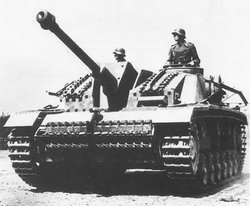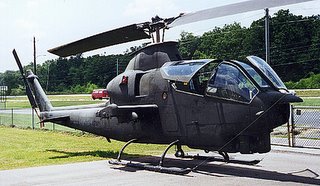Horse.
This is coolbert:
The era of the horse cavalry for all practical purposes ended about 100 years ago. With the advent on the internal combustion engine, the horse soldier had met his demise. To be replaced by a whole assortment to wheeled and tracked vehicles.
The horse cavalry for a period of about four thousand years WAS THE premier arm of the military the world over. Especially of the nobility. Persons of noble rank [called the equestrian rank in Rome [Order of the Horse]] were among the few that were able to own horses and armor and the weapons of the horseman. This was a privilege they guarded carefully. To be a foot soldier was a NOT the role of the noble [think of the pawn in chess!!].
And the horse soldier had a mystique, glamour, arrogance, and yes, romance about their person.
Here is what the myth man, Joseph Campbell has to say about the man on horse at war:
"It is difficult to realize that before the second millennium B.C., wherever man went, unless by coracle or boat, he traveled on his own two feet . . . With the mastery of the horse, however, all things changed . . . Further more, in Southeastern Europe, c. 1500 B.C., a new weapon, the sword, appeared, contrived for slashing from the saddle. From somewhere men were coming who had learned to ride.
Now to all who acquired the used of them these new weapons gave a powerful horizontal thrust that carried all before it, and the older, basically peasant, land-rooted civilizations were simply helpless. But not only a new striking power, a new arrogance, too, had arrived. . . . The words cavalier, caballero, chevalier, and chivalrous tell the tale. The day of the peasant afoot [think pawn] and the nobleman ahorse [think armored knight] had dawned."
Old ways and ideas die hard. In the military perhaps above all.
The horse for all practical purposes has been gone for almost one hundred years now. And yet, to this day, the U.S. Army, calls vehicle maintenance "motor stables", and refers to certain armored units as "armored cavalry". A reminder of a much older time. Even in the Twentieth Century, American general officers such as Patton and George C. Marshall were noted for their horse riding ability. On the morning of December 7, 1941, General Marshall was indisposed due to his daily morning exercise routine, a horse ride!!
Even in World War Two [WW2] and in Vietnam, the various militaries had soldiers who volunteered for combat roles that seemed to resemble the cavalry of old. In the manner of an armored knight. This was felt to be dangerous [it was], but very useful, important, and again, yes, glamorous soldiering.
Among the German soldiery of WW2, duty in the assault gun troops was felt to be as close as the modern troop could approach the role of the ancient armored knight on horseback.
According to a German SS Lieutenant describing the role of the assault gun:
"Fighting in a SP [self-propelled] is the nearest thing that contemporary ground warfare can offer to the soldier's concept of the a knight in armour".
An assault gun was an artillery piece mounted on a tracked, armored vehicle [for all practical purposes, a turretless tank]. Used to support infantry on the offensive and to support that same infantry against enemy tank attack when on the defensive.

"Forward and at the enemy ! Assault guns are an offensive weapon and give the infantry immediate, powerful support through mobility, fire and striking power."
Sturmgeschütz Training Manual.
German units employing assault guns were very effective throughout the entire war, inflicting just enormous casualties upon their enemies, especially upon Soviet tanks. This effectiveness can probably be attributed to the fact that the vast majority of the gun crews were volunteers, possessing a high esprit.
According to Lucas:
"that 'a weapon is only as good as the soldier who uses it' is an axiom which, if true, would show that the men of the German SP gun units of WW2 were very good soldiers indeed, for the quality of that army's assault artillery was frequently commented upon by allied intelligence appreciation in the most glowing terms."
I think it is safe to say that the German assault gun crews were good. NO, very good indeed.
[I find it interesting that U.S. Army is currently fielding a version of the brand new Stryker vehicle as an assault gun. A variation of which duplicates the assault gun used by the Germans. This variation comes with the 105mm gun taken out of the current Abrams series of tanks, which are being upgraded to a 120 mm gun. A good use of firepower and a resurrection of an old concept once felt to be outdated by the anti-tank guided missile [ATGM]].
In Vietnam, the helicopter gunship was the weapon system that allowed the soldier to experience as closely as possible "the nearest thing that contemporary ground warfare can offer to the soldier's concept of the a knight in armour". [of course, this is the statement of the German SS officer as quoted above].
I am primarily thinking here about the Huey Cobra gunship.
A two man [pilot and gunner] helio, lightweight, NOT armored, but fast and possessing an abundance of deadly firepower. Firepower came from a combination of 7.62 mm mini-guns, rockets, hand-cranked 40 mm grenades, and in later models, ATGM's of the TOW variety. One gunship was said to possess the firepower of an entire infantry battalion!! It is said that American soldiers, in an desperate battle during Vietnam, would actually cry with joy when a Huey Cobra would make it's appearance.

One variation of the Huey Cobra was armed in this manner:
* One 20mm three-barrel M197
* Eight Hellfire or TOW missles
* 76 2.75-inch or
* 16 5-inch Zuni rockets
With both the German SP and the Huey Cobra, the combatants using the vehicles were highly mobile, possessed a lot of firepower, closed with the enemy and saw them face to face, and had an influence upon the battlefield far in excess to the mere numbers of machines.
To a degree, the horse cavalry and the knight on horseback lives, but in another form.
coolbert.

0 Comments:
Post a Comment
Subscribe to Post Comments [Atom]
<< Home